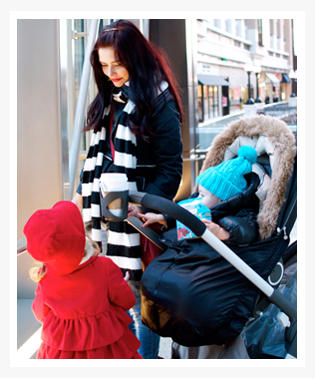I had an overwhelming flow of email over the last week from my readers asking to tell more about ballet/dancer's life and pregnancy. Many wanted to know what it is like to be pregnant and dance, and what I thought about it.
I wrote this post over the course of a week. It is long, but I hope you read it all. Many takes on what a dancing pregnancy can be like, and ... I've personally experienced almost all. I hope you enjoy it.
After Royal Ballet principal Darcey Bussell had her first child in 2001, a London critic wrote, "Dancers who have had large families don't stay at the peak of their profession ... If Bussell ever wanted to be a mother of four, she would certainly have to kiss her ambitions goodbye." A few years back those words still stung, but not enough to deter Bussell. She was 34 when pregnant again, and intent on returning to the stage.
"I don't feel that old," she said.
American Ballet Theatre's Julie Kent also was expecting her first child at 34 and planed to be back in costume by fall.
"I feel so blessed to be able to have this experience, and at the same time continue doing something I have such a passion for," said Kent.
pregnant Kent rehearsing. she's a trouper - those pirouettes are much, much harder with the belly. i landed on my b.u.m.m. once. or twice.
While performing during pregnancy is not a big deal in other art forms, dance - particularly ballet - is definitely a stretch. Many performed in early pregnancy, but few went as far as Julie Kent . Excerpts that reveal more from Kent's interview: "What does it feel like to dance pregnant?
KENT -- I didn't really feel much different except when I was performing the last week. I started feeling the baby move right before I went onstage -- it was usually during ''Dorian.'' It wasn't a huge movement -- just a tiny little elbow or little hand or foot, but I definitely felt the two worlds as one.
Why did you decide to dance at City Center?
KENT -- Dancing is such a natural part of my life, and I felt wonderful. I didn't have one day of morning sickness. And if I had chosen not to dance, I think I would have been wondering why -- you're not injured, you're not sick, and there's nothing that different about you except your waistline's growing...
You've never had a weight problem. What has it been like, as a dancer, to see your body expand?
KENT -- The number on the scale is more strange to me than the reflection in the mirror. I just see my tummy getting bigger. Everything is still in proportion. So that part has been fine. The numbers on the scale were a little bit more of a shock -- just because they're all numbers I've never seen in my life! One thing about watching the body change is that it's a lot of fun. To look down and see a little Buddha belly? It just makes me laugh."
While Julie had a very positive experience, by far this is not a standard or typical protocol for dancers. The American Guild of Musical Artists didn't add a maternity clause to its contracts until 1990. Today's late thirty-something ballet dancers at least with major companies are the first generation who grew up knowing they wouldn't lose their jobs after a pregnancy leave. Although history yields a few stellar exceptions (beginning with Marie Taglioni and Carlotta Grisi in the ninetheenth century), most ballerinas saw motherhood as a career handicap. "No babies, no husbands, no boyfriends," said Patricia Neary, a New York City Ballet soloist of the 1960s. This unwritten rule was understood by almost everyone who danced for George Balanchine.
More so, a ballerina can't choose to stay on the company's clock until a few weeks or days before her due date. Her pregnancy leave begins when she is no longer able to perform, and only ends when she's rehearsing and performing again. In the interim, she's entitled to disability leave of only about $250 a week--even if she's a principal. Many are able to stay on the payroll by performing non-dancing roles ( Bingo! I went into labor with my third child while being a Party Parent for a Nutcracker. I have a VERY dance inclined girl! Do they relate? )
Terese Capucilli, principal dancer with the Martha Graham Dance Company, gave birth to Thompson Daniel Randolph and is back performing again. Reflecting back on pregnancy, she has some very valid and note-worthy points to consider.
"What made you decide to have a baby when you did?
TC: I always thought I would have ant but the momentum of my career took hold, and I kept thinking, "Next year," or "One morn New York season." then it
TC: I always thought I would have ant but the momentum of my career took hold, and I kept thinking, "Next year," or "One morn New York season." then it
got to a point when my biological clock was ticking. With the suspension of the Graham Company in 2001, I wasn't doing much performing and I thought" I better do it now."
How do you feel now about your decision?
TC: It's an incredible experience. It's my best role yet. With your body being your life, it's hard to take that plunge. In some respects I wish I had started earlier because I'm not sure how many years Thompson will have of watching me dance.
Did you perform during your pregnancy?
TC: No I had a miscarriage the year before. When I got pregnant the first time I kept dancing and teaching. Dancers always think they're invincible! I was feeling good, but the baby just wasn't strong enough. So when I got pregnant again, I really did nothing--nothing for a dancer I taught some but took it easy.
Thoughts on dance and pregnancy?
TC: The word can't help but evoke an emotional response. And for a dancer, it has bittersweet implications. I can remember standing backstage watching a pregnant performer "suck up her pull-up" before she burst into her opening movements. Another time, I watched a dancer with morning sickness run continuously in and out of the bathroom in order to avoid vomiting in the rehearsal studio. The bottom line is that dancers love to dance, and will dance, but how does the baby inside the dancer change all that?"
I found both interviews quite interesting and ... very truthful. I've been there. All 4 times.:)
While I dream to stand in line with these great ballerinas in their performing careers, we do stand on the same level in the motherhood.
I've been in the "run away to the bathroom" mode, I've done "suck up her pull-up", I've danced with the gracious belly, done non-dancing payroll roles to "the very end" ( my husband jokes that "next time" (?!) i'll just have the baby during the intermission and go on with the show), I had a miscarriage from overexertion while under ruling of a ridiculously demanding (and very aware of my state) director, and came back only 9 days after giving birth... I love my dance. And because I love it , I also wish for awareness of real life of a real ballerina to spread, because we need the change.
Dancers love art, but they deserve to have normal life just as anyone else does.
I dream for paid leave that would allow one to be easy on one's pregnant body, and paid leave to be able to stay with the baby at home for at least the first short few weeks. I dream of all directors allowing for children in the studio, or at least providing with the child room. I wish for the words "ballerina" and "mother" , said in the same sentence , to bring smiles to director's faces instead of frowns.
I dream for paid leave that would allow one to be easy on one's pregnant body, and paid leave to be able to stay with the baby at home for at least the first short few weeks. I dream of all directors allowing for children in the studio, or at least providing with the child room. I wish for the words "ballerina" and "mother" , said in the same sentence , to bring smiles to director's faces instead of frowns.
Motherhood makes better dancers. The depth of the new emotional level is well worth the physical changes and the process itself. And ... in words of Melissa Hayden, NYCB principal , " Having a child makes you more stable" . It's a nice side effect that comes in handy while on pointe .
Please, share this post wherever you can - tweet, fb, blog, email.I sincerely hope that , one step at a time, the awareness rises. As a mother of four AND a professional dancer, I hope to see this change happen. And I know that many more are hoping and waiting for it as well. Let's make the change , that is long overdue, together.



































My ballet teacher was six months pregnant when she stopped dancing to have her baby so, for me, dancing while pregnant never seemed like a big deal. Until I got older and learned how it was shunned. I was like, 'Why? Why should dancers have to choose?' It's frustrating because it goes back to the whole issue that 1) skinny is only allowed and 2) women don't know their body well enough to know how to treat it.
ReplyDeleteYou're an inspiration to us all, Olya.